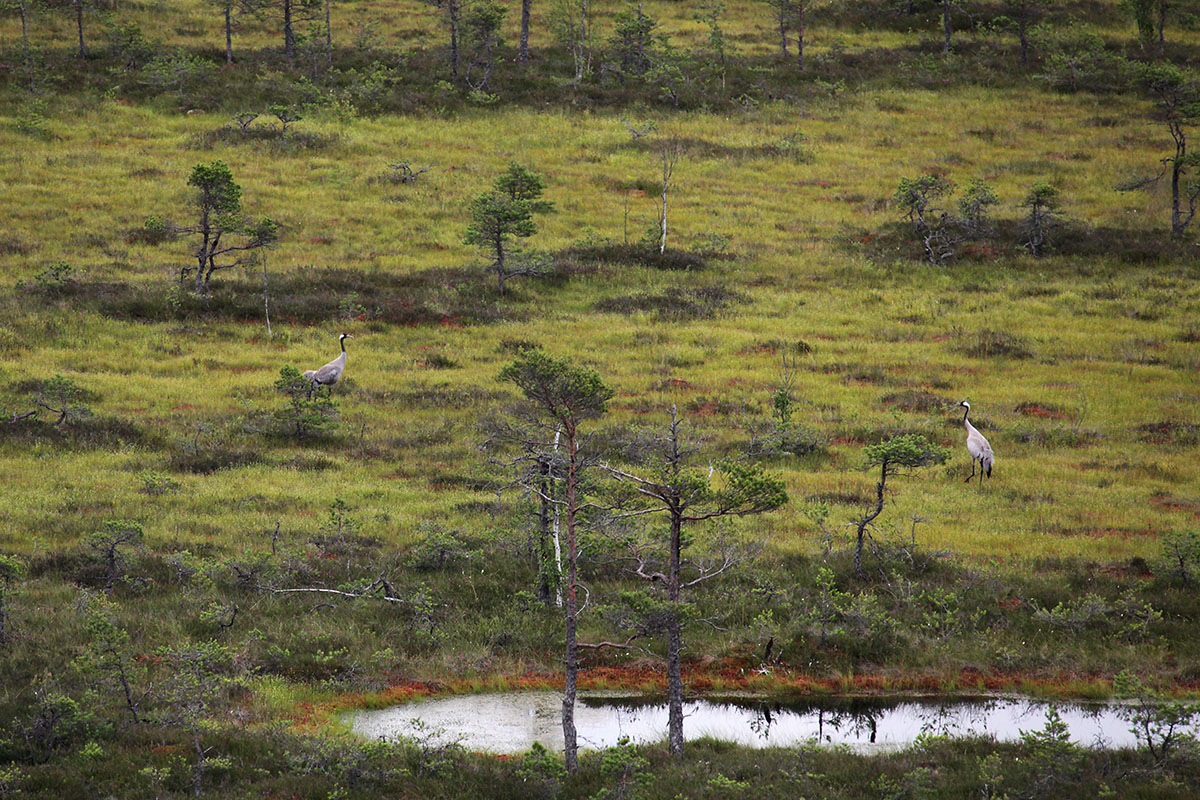Mires have been a refuge from wars, diseases, or other people
Fens and bogs have been a part of the daily life of ancient Estonians, thus becoming an integral part of culture.

The mire has been a refuge from wars, diseases, or other people – a role played by the mires during World War II, when the so-called forest brothers hid there. Mires have always been a source of berries, peat, and hay; people hunted there or used the mires for grazing. In the winter, winter roads were built in the mires, along which goods were transported. Before the railways and a proper road network, these were important trade routes and often the most direct.
Mires also had their dangers. According to folklore, supernatural beings, fairies, mysterious lights, mire spirits, and witches live in the mires. A mire has always been a bit of a mystical place and a motif widely used in folklore. Fr. R. Kreutzwald writes about mires several times in ‘Kalevipoeg’, for example in the 10th story about Kalevipoeg trying to calm down two sorcerers in the mire or about Salme picking berries in a mire in the first story.
In the literature of the nineteenth century and the beginning of the twentieth century, mires were not yet seen as a beautiful place, but rather as a place of water, poor vegetation, and loneliness. In the story ‘Vari’ (‘The Shadow’), J. Liiv describes the mire as a boring, poor place where nature has not given ‘neither beauty nor fertility’.
The mires were rather a horrible, terrible place in the eyes of the people, a place that was feared and where it was not desirable to go. The mire was a gurgling, wet area where people got stuck, where they got lost, and from where they could not get out. In the short story ‘Soo’ (‘The Mire), O. Luts describes the mire as a bustling and gurgling place where mire spirits cook soup in gigantic pots.
Aesthetics of drainage
The drainage of mires began in the early twentieth century. From the 1920s until World War II, the quotation from A. H. Tammsaare’s ‘Truth and Justice’, ‘Work and sweat, then love will come’ illustrates the attitude towards the mire. The mires were drained by hand, with hard work, and were thus seen in practical terms (as arable land and pasture gained after the drainage) – the aesthetic aspect was rarely described during this period.
Drainage became widespread in the 1940s and 1950s and changed the appearance of mires beyond recognition. Attitudes towards mires also changed: mires were drained with machines, and this process was also portrayed in the literature as heroic, victorious, as a necessary struggle with nature. For example, in H. Leberecht’s novel "Valgus Koordis" (‘Light in Koordi’), they promise to drain all the mires.
Attitudes towards mires changed in the 1970s, when Professor V. Masing led the so-called mire war – people started to the fight against mire drainage. At that time, the public awareness also rose and, as a result, the plan to drain all the mires was abandoned [1]. It was understood that mires as ecosystems are important and characteristic places of Estonia and must be protected.
Today, mires are recognised as habitats characteristic of Estonia, which affect the well-being of all of us and which also have aesthetic, recreational (holiday-related), and cultural-historical significance. The dreaded, gurgling place has become a beloved place to visit. Boardwalks and observation towers are popular holiday and hiking destinations for the whole family [2].
Last modified: 09.11.2021
____________________________________________________________________________________________
[1] Soode uurijatest; ka P. Pungas-Kohv. Kui soine on Eesti ilukirjandis? Akadeemia, 2016, lk 2113–2137.
[2] Rohkem info: Inimene ja soo; Pärand soodes